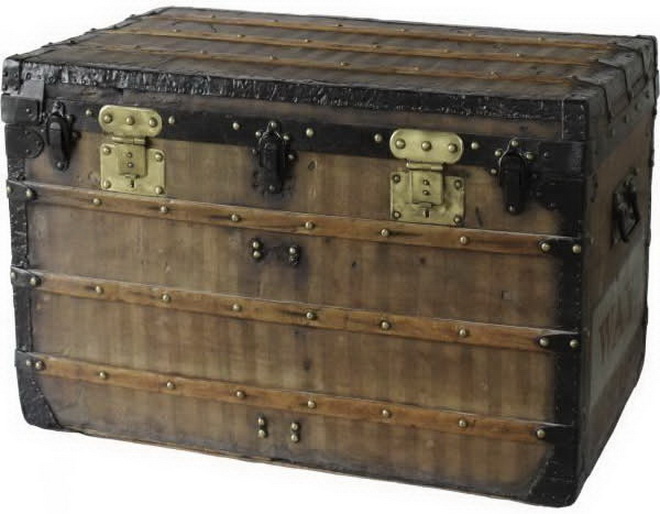 Louis Vuitton Malletier, commonly referred to as Louis
Vuitton, or shortened to LV, is a French fashion house founded in 1854 by Louis
Vuitton. The label's LV monogram appears on most of its products, ranging from
luxury trunks and leather goods to ready-to-wear, shoes, watches, jewelry,
accessories, sunglasses and books. Louis Vuitton is one of the world's leading
international fashion houses; it sells its products through standalone
boutiques, lease departments in high-end department stores, and through the
e-commerce section of its website. For six consecutive years (2006–2012), Louis
Vuitton was named the world's most valuable luxury brand. 2012 valuation was
US$25.9 billion. Year 2013 valuation of the brand was US$28.4 billion with a
sales of US$9.4 billion. The company operates in 50 countries with more than
460 stores worldwide.
Louis Vuitton Malletier, commonly referred to as Louis
Vuitton, or shortened to LV, is a French fashion house founded in 1854 by Louis
Vuitton. The label's LV monogram appears on most of its products, ranging from
luxury trunks and leather goods to ready-to-wear, shoes, watches, jewelry,
accessories, sunglasses and books. Louis Vuitton is one of the world's leading
international fashion houses; it sells its products through standalone
boutiques, lease departments in high-end department stores, and through the
e-commerce section of its website. For six consecutive years (2006–2012), Louis
Vuitton was named the world's most valuable luxury brand. 2012 valuation was
US$25.9 billion. Year 2013 valuation of the brand was US$28.4 billion with a
sales of US$9.4 billion. The company operates in 50 countries with more than
460 stores worldwide.
Louis Vuitton (designer)
 Louis Vuitton (4 August 1821 – 27 February 1892) was a
French businessman. He was the founder of the Louis Vuitton brand of leather
goods now owned by LVMH. Prior to this, he had been appointed as trunk-maker to
Empress Eugénie de Montijo, wife of Napoleon III.
Louis Vuitton (4 August 1821 – 27 February 1892) was a
French businessman. He was the founder of the Louis Vuitton brand of leather
goods now owned by LVMH. Prior to this, he had been appointed as trunk-maker to
Empress Eugénie de Montijo, wife of Napoleon III.
Early life
Vuitton was born on 4 August 1821 in Anchay in the Jura
region in Eastern France. Descended from a long-established working-class
family, Vuitton's ancestors were joiners, carpenters, farmers and milliners.
His father, Xavier Vuitton, was a farmer, and his mother, Corinne Gaillard, was
a milliner. Vuitton's mother died when he was only 10 years old, and his father
soon followed.
Work and career
On the first day of tolerable weather in the spring of
1835, at the age of 13, Vuitton left home alone and on foot, bound for Paris.
He traveled for more than two years, taking odd jobs to feed himself along the
way and staying wherever he could find shelter, as he walked the 292-mile trek
from his native Anchay to Paris. He arrived in 1837, at the age of 16. While
there was widespread poverty in Paris the city was also being transformed by
the Industrial revolution. Vuitton was taken on as an apprentice in the
workshop of a successful box-maker and packer named Monsieur Marechal. In 19th-century
Europe, box-making and packing was a highly respectable and urbane craft. A
box-maker and packer custom-made all boxes to fit the goods they stored and
personally loaded and unloaded the boxes. It took Vuitton only a few years to
stake out a reputation amongst Paris's fashionable class as one of the city's
premier practitioners of his new craft.
In 1854, Vuitton married 17-year-old Clemence-Emilie
Parriaux. Shortly after he left Marechal's shop and opened his own box-making
and packing workshop in Paris. Outside the shop a sign hung reading
"Securely packs the most fragile objects. Specializing in packing
fashions."
In 1858, four years after opening his own shop, Vuitton
debuted an entirely new trunk. Instead of leather, it was made of a gray canvas
that was lighter, more durable and more impervious to water and odors. However,
the key selling point was that unlike all previous trunks, which were
dome-shaped, Vuitton's trunks were rectangular—making them stackable and far
more convenient for shipping via new means of transport like the railroad and
steamship. Most commentators consider Vuitton's trunk the birth of modern
luggage.
The trunks proved an immediate commercial success, and advances
in transportation and the expansion of travel placed an increasing demand for
Vuitton's trunks. In 1859, to fulfill the requests placed for his luggage, he
expanded into a larger workshop in Asnieres, a village outside Paris. Business
was booming, and Vuitton received personal orders not only from French royalty
but also from Isma'il Pasha, the Khedive of Egypt.
After the re-establishment of the French Empire under
Napoleon III, Vuitton was hired as personal box maker and packer to the Empress
of France, Spanish countess Eugenie de Montijo. She charged him with
"packing the most beautiful clothes in an exquisite way." De Montijo
provided Vuitton with a gateway other elite and royal clients who provided him
with work for the rest of his career.
He continued to work until his death at the age of 70 on
27 February 1892. After his death, his son Georges Vuitton took over control of
the company.




No comments:
Post a Comment